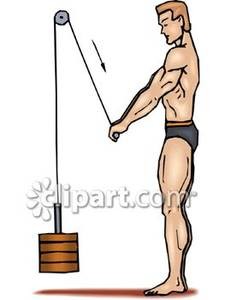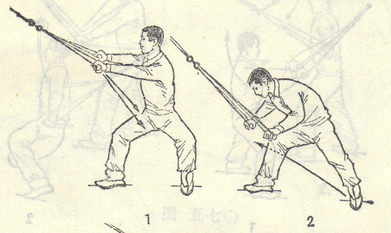Aim to distribute the force throughout your entire body. Do this through developing calmness & relaxation, internal sensitivity for structural feedback, and external sensitivity as you test your peng (pretty much pronounced "pung") against something like a heavy door, a hanging bag, or a partner. In the case of the latter, you should feel force at two zones of contact: where your hands/arms meet the external object, and where your feet meet the floor. Eventually, you should not be able to discern force or effort at any other points in your body. If you feel force (or tension or pain) or a gap in force (weakness) at a point in the body in the structure between those two external points, then you have not yet distributed the force evenly through your structure.
Once you achieve that distribution, you should understand the hard/soft paradox: you feel soft inside because no single, discernable part of your structure is doing the work, and the opponent/partner feels the hard external result of the peng.
Zhan Zhuang goes a long way toward developing this distribution. When I had it, I could feel nothing (while practising ZZ) except the pressure on the soles of my feet. I felt empty, because no other bodily sensation stood out and reached my awareness. It was a good moment.


